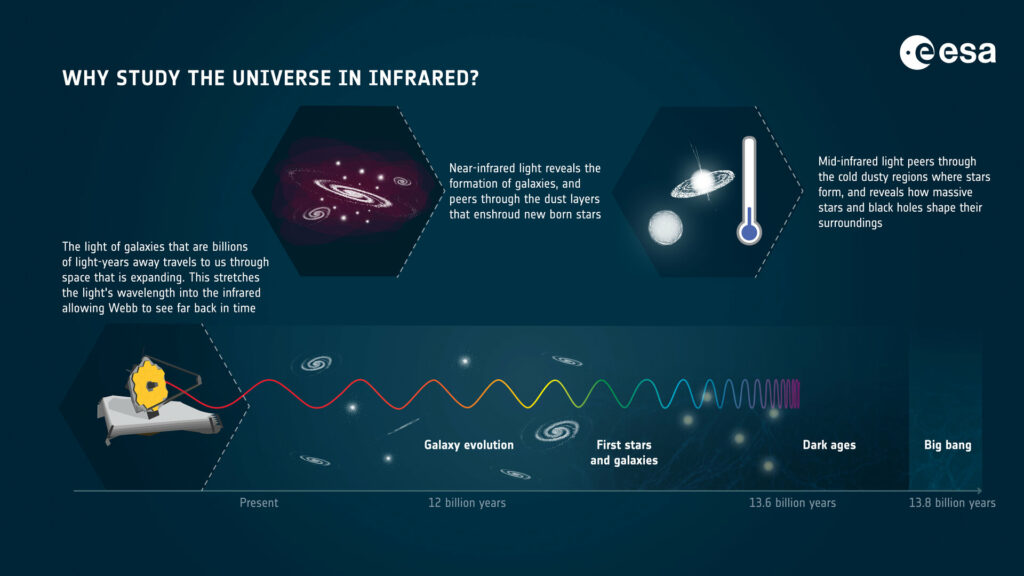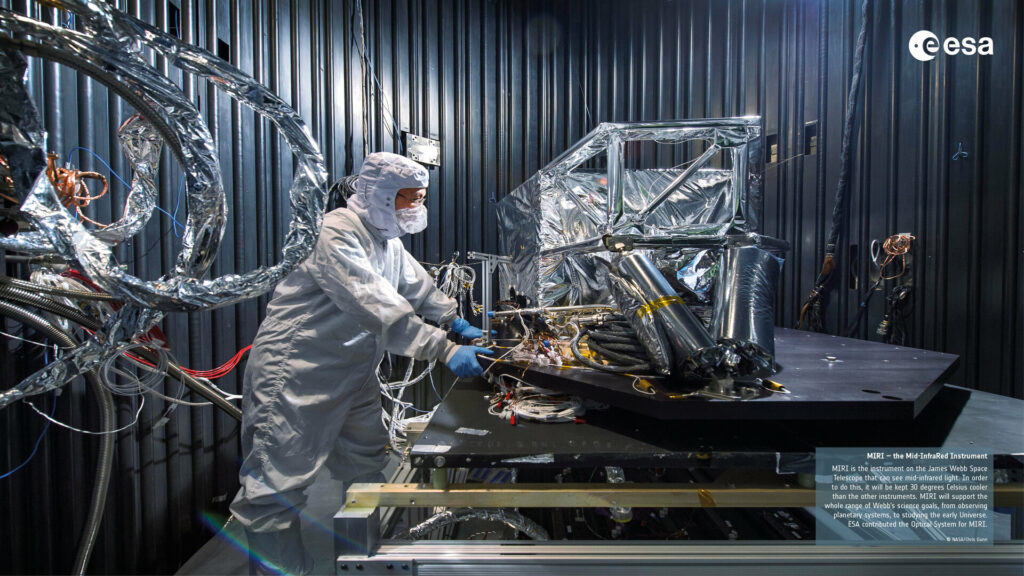Specialists of the James Webb Mission Support Group (JWST) reported successful cooling to operating temperature of the telescope’s most sensitive instrument, the MIRI mid-infrared camera. This means that the observatory has become one step closer to the start of its scientific program.
How to see the light of the first stars
Why do we need to cool JWST instruments? The fact is that the telescope is designed to conduct observations in the infrared range. It makes it possible to observe celestial bodies with extremely large red shifts. We are talking about stars and galaxies that are at such great distances from Earth that the wavelength of the light they emit has increased so much that it has turned into infrared radiation.

But to capture infrared radiation from such extremely distant objects, JWST instruments must be reliably protected from any heat sources. For this purpose, the telescope is equipped with the largest sunscreen in history. After a successful deployment, it managed to cool the telescope to -183 °C, which is enough to maintain the normal operation of three of the telescope’s four scientific instruments.
James Webb’s Most Sensitive Instrument
However, the fourth JWST scientific instrument, the MIRI camera, has such high sensitivity that its operating temperature should not exceed -267 °C. One sunscreen is not enough to cool it to such a low level. Therefore, engineers equipped MIRI with a cryocooler, which uses liquid helium. During several successive steps, they activated the device and first cooled the camera to -258 °C, and then to -267 °C.

The successful cooling of MIRI was an important milestone for the project. Now mission specialists can fully focus their efforts on calibrating the camera and testing it and other telescope instruments. It is expected that these works will be completed by June, after which JWST will begin its very intensive scientific program.
Recall that recently the Gaia Observatory took a picture of the James Webb telescope.
According to https://www.esa.int
Follow us on Twitter to get the most interesting space news in time
https://twitter.com/ust_magazine

